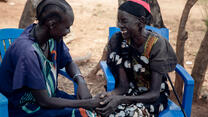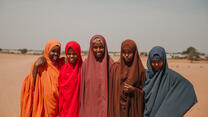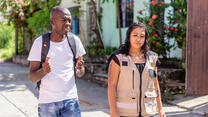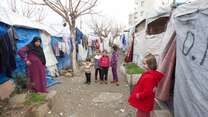Humanitarian aid to refugee and internally displaced people (IDPs) has increasingly shifted from rural and camp environments to urban areas in recent years, with 60% of all refugees and 80% of all IDPs currently living in urban areas.
Risks of violence for displaced persons in camp-based humanitarian settings are well documented and include gender-based violence, intimate partner violence, sexual violence, and forced marriages, as well as a number of other forms of inter-communal violence, discrimination, and denial of resources, assistance, or assets. However, little is known about types and drivers of violence and interventions to reduce violence among displaced and host populations in urban areas, who likely face a different set of challenges due to the complex infrastructure, sociopolitical context, and service provision systems found in cities.
To this end, the IRC conducted a systematic review to research the current state of knowledge regarding:
- The drivers of violence;
- The contributing factors of violence or rights violations; and
- Programming to address violence among displaced and host populations in crisis and post-crisis urban areas.
As a result of this systematic review, it is clear that urban displaced are exposed to drivers of violence unique to urban areas as well as others shared across a variety of humanitarian settings, including refugee camps. Economic strain, the inability to meet basic food and shelter needs, lack of legal protections, and broad discrimination against refugees and IDP populations by host communities are all examples of challenges specific to displaced populations in urban areas that contribute to the violence they experience. Based on the findings, a number of recommendations are provided, geared towards service providers and researchers working with urban displaced populations. They include recommendations for more high quality, methodologically rigorous, and explicit research on the drivers of interpersonal and community violence and the evaluation of effective programming to address violence, the inclusion of perpetrators in research to better understand and ultimately prevent violence, and a socio-ecological approach to designing and evaluating interventions related to violence. They also include recommendations for humanitarian practitioners working to combat violence in urban areas.



